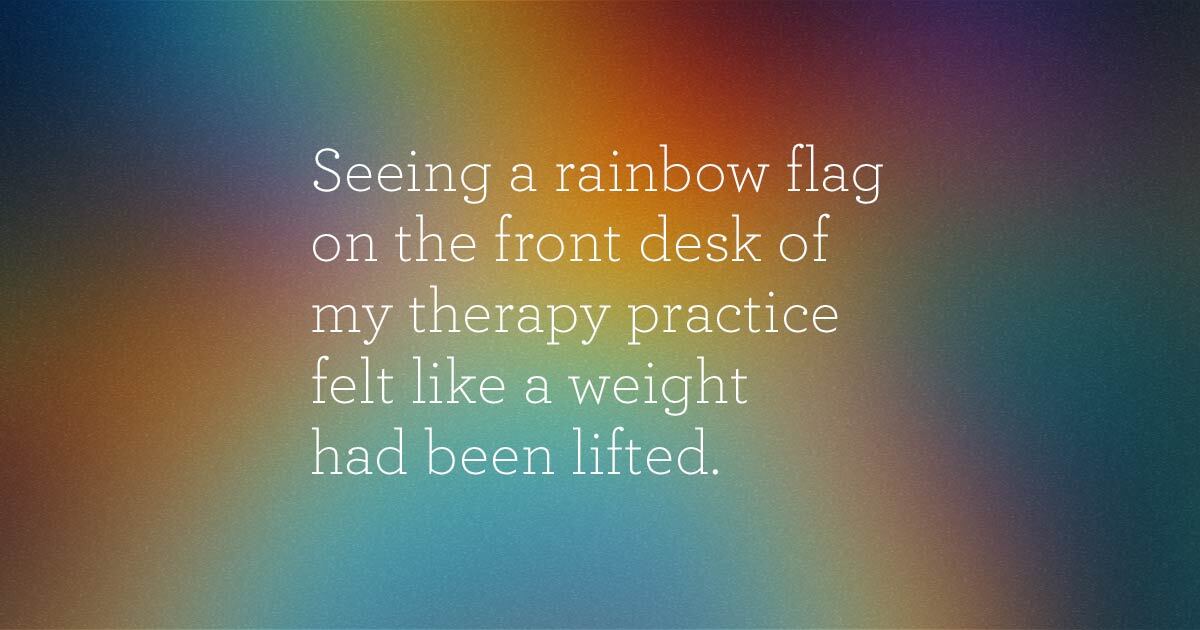When I reflect on who I am, I envision a stack of books, my guilty pleasure disco playlist blasting, and the mouthwatering taste of warm gluten-free cookies and chamomile tea—rarely does my sexuality arise. While I have dated and made beautiful connections with all genders, it is not even close to the most interesting thing about myself. I love my ability to care for all different types of people, and I now view it as an asset rather than a weakness, however, it took me a long time to get here.
It is no secret that mental health issues within the LGBTQ+ community are rarely prioritized, significantly contributing to the disproportionate, skyrocketing rates of depression, anxiety, suicide, and homelessness rates amongst these populations. The plaguing loneliness and isolation that arise from realizing your queerness can feel so consuming because it seemingly interferes with everything: social life, friends, work, family, and so much more. As a young, closeted person navigating their sexuality for the first time as an adolescent, the casual homophobia ran rampant. From jokes in the locker room made before gym class begging to not be “checked out” while changing to the slurs overheard in my classes, it often felt unescapable. These words sent a constant reminder to me that my identity was something to be ashamed of, and to someone who wanted so badly to belong, they deeply hurt. I felt overwhelmed by the unknown surrounding who I was. You don’t exactly learn about queer sex, abuse in same-sex relationships, how to handle coming out, or experiencing rejection, homophobia, or transphobia for the first time. The truth is, you have to navigate some tough terrain in teaching yourself essentially, how to be queer. It’s a lot to do on your own!
When I was 14, I sought out mental health care for the first time. Most of the issues I discussed in sessions were related to my inner anger and frustration from struggling with my identity and juggling the intensity of my own judgment. Additionally, I had a lot of shame inside but felt like I had nowhere to channel these feelings healthily since I was living in secret. I felt myself plagued with guilt and anxiety around exploring my identity, and even still do sometimes.
As a queer person, it is OK to acknowledge the guilt and the uncomfortable feelings that often follow without allowing them to determine your truth and level of happiness, and you do not have to feel 100% proud all of the time. What if I didn’t feel super keen on settling on one set way to define myself and the idea of “coming out” felt like some stuck dead-end that made me feel like I was trapped in a specific box forever? And how could I balance my own fears for my safety with showing my truest, most authentic self when walking down the street holding my girlfriend or non-binary partner’s hand? These were issues I began to delve deeper into during therapy sessions throughout my later high school into college years.
Although it may seem minor, seeing a rainbow flag on the front desk of my therapy practice felt like a weight had been lifted.
I distinctly remember texting my best friend that I felt safe and visible being who I was without fear. As for my therapist at the time, I absolutely adored her and am beyond grateful for all the ways that she helped guide me for years, but deep down, I knew she could not fully understand what I was going through because she could not relate. This is not to dismiss the commendable work that any therapist, regardless of their sexuality does, but it is about how they use their resources and their effort in providing support to their LGBTQ+ clients. I was fortunate enough to be met with pamphlets, resources, and even a rainbow rubber duckie she gave me to remind me that who I was was not a mistake, but not everyone is fortunate enough to have that level of medical care—and that must change.

As a community, we need accessibility, representation in case studies, research, and within the field itself, more inclusive training practices and specialists who are equipped to best provide support to their LGBTQ+ clients. Being cognizant of how our experiences with sexuality and/or gender contribute to our mental health can advance our understanding and acceptance of ourselves.
Years later, I know there is not just one way to be queer, but no one exactly tells or teaches you that. Therefore, we need medical spaces where we can be ourselves unapologetically without fear of discrimination, judgment, or improper treatment. No matter where you are in your journey of self-discovery, know that you are so loved being exactly who you are and that while your story matters, no queer person’s story is the same. Above all, remember to be kind to yourself and others. Be mindful of how you approach such topics, chose your language, conduct yourselves amongst queer people, and listen to us.
At the end of the day, I am just Becca. I am a writer, a tea and cat lover, a bookworm, a friend, a daughter, and so much more that expands beyond the scope of who I date—and that is a beautiful thing.
You are welcome here. All of you. Remember that—always. We encourage you to use TWLOHA’s FIND HELP Tool to locate professional help and to read more stories like this one here. If you reside outside of the US, please browse our growing International Resources database. You can also text TWLOHA to 741741 to be connected for free, 24/7 to a trained Crisis Text Line counselor. If it’s encouragement or a listening ear that you need, email our team at [email protected].